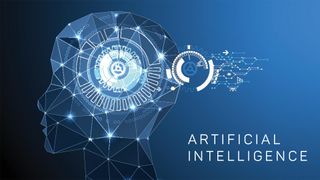The difference between AI, machine learning and digital assistants
We hear a lot about artificial intelligence (AI), machine learning and digital assistants these days. But what does it all mean?

Microsoft, Google, Amazon, Apple, Facebook and others are aggressively imbuing their products and services with "intelligence." We're told that computer systems will become smarter, will anticipate our needs, proactively serve us, and understand us in various contexts and via multiple methods including voice, text, inking and motion.
The digital "face" of this promising tech comes in the form of assistants like Cortana, Assistant, Siri, Alexa, and Bixby. As smart speakers and the AI genies they harbor begin finding a place in our homes, and as those same digital sprites serve us through our phones and PCs, the promise of an AI-assisted existence is becoming a reality. But what's behind the magic of our speaking, "Hey, Cortana," and her - its - response? Are AI and machine learning the same things? And are the terms digital assistant and AI meant to be interchangeable?
(Artificial) intelligence is as intelligence does

AI is an area of computer science that seeks to create intelligent machines that can behave, work and react like humans. This is a very complex field that must consider the various domains that contribute to how humans respond to and interact with the world and one another. Imbuing a system with knowledge or information is not sufficient to create intelligence.
The ability to reason, solve problems (particularly outside of prescribed parameters), perceive the world, plan, interact with and manipulate objects, and learn are all necessary components of intelligent computer systems. Children within the first three years of life must be exposed to a range of information and experiences to equip their rapidly forming brains for adulthood, and AI must be exposed to a variety of experiences as well.
This exposure not only provides AI systems with data about objects but also categories in which to fit similar experiences, properties of specific things, and the relationships between them. This segment of AI development, knowledge engineering, is key to helping AI systems mimic human intelligence. Though the promise of reliable AI companions has leaped from the pages of science fiction, we should temper our expectations of their current capabilities with the knowledge that we have only dipped a toe into this vast and complex sea of AI.
(Machine) learning the ropes
Eric Horvitz of Microsoft Research talks about Microsoft's long-time ML investments.
Machine learning (ML) is not AI, but it is necessary for the development of AI systems. Just as learning new things helps humans to express and apply intelligence, a computer system's ability to learn is critical to its intelligence. Machine learning occurs in either a supervised or unsupervised contexts.
Get the Windows Central Newsletter
All the latest news, reviews, and guides for Windows and Xbox diehards.
Supervised ML involves the classification of objects in specific categories. It also includes the obtaining of sets of numerical examples of input and output. This allows for the discovery of functions that enable the system to generate suitable outputs from respective inputs. In a nutshell, it is teaching computers how to make and improve predictions based on supplied data.
Like humans, machines must be taught.
Unsupervised ML is a computer system's ability to identify patterns in streams of input. This provides the system with a sense of autonomy as it "learns." AI-driven security systems, for example, can perceive patterns in behaviors that may be a threat to a system. They're also able to proactively quarantine threats or move entire digital assets to a secure location.
Unsupervised ML is the type of "education" science-fiction stories like the movie "Short-Circuit" have made us ultimately desire of our digital assistants. In these stories, computer systems autonomously assess data, reach independent conclusions, and then take action based on that reasoning. We're a long way away from the autonomy we see in Johnny 5 from Short-Circuit, however. Still, our experience with the proactive, location- and context-based alerts from Cortana and Assistant (combined with the promise of their usefulness) is pushing us to push the creators of these assistants to make them smarter and more independent.
Bill Gates and Steve Ballmer pave the way for Nadella's AI vision
Digital assistants lend a hand

We often use the terms AI and digital assistants interchangeably, but the two aren't necessarily the same. Digital assistants, like Cortana, can do what they do because they utilize AI. AI doesn't have to be in the form of a digital assistant, however.
Microsoft's Seeing AI app, which utilizes Microsoft's Cognitive Services, uses AI to process visual input from a smartphone's camera and then verbally communicates that information to a user with a visual impairment. The company's Hear AI app uses AI to process input from a smartphone's microphone and visually conveys that information to a person who is deaf or hard of hearing.
AI is also present in products like Microsoft Office, Apple's and Google's messenger platforms, camera apps and much more. AI integrated within products helps us get things done, provides suggestions, remembers previous behavior, completes messages and more.
To sum that all up, AI makes digital assistants useful, and we, through ML, teach AI systems. That is until they become proficient at teaching themselves. But that's another story.
Jason L Ward is a columnist at Windows Central. He provides unique big picture analysis of the complex world of Microsoft. Jason takes the small clues and gives you an insightful big picture perspective through storytelling that you won't find *anywhere* else. Seriously, this dude thinks outside the box. Follow him on Twitter at @JLTechWord. He's doing the "write" thing!

